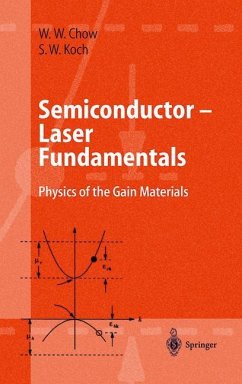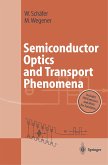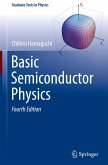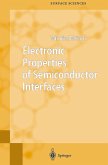This in-depth title discusses the underlying physics and operational principles of semiconductor lasers. It analyzes the optical and electronic properties of the semiconductor medium in detail, including quantum confinement and gain-engineering effects. The text also includes recent developments in blue-emitting semiconductor lasers.
Since Fall of 1993, when we completed the manuscript of our book "Semi conductor-Laser Physics" [W.W. Chow, S.W. Koch, and M. Sargent III (Springer, Berlin, Heidelberg, 1994)] many new and exciting developments have taken place in the world of semiconductor lasers. Novel laser and ampli fier structures were developed, and others, for example, the VCSEL (vertical cavity surface emitting laser) and monolithic MOPA (master oscillator power amplifier), made the transition from research and development to production. When investigating some of these systems, we discovered instances when de vice performance, and thus design depend critically on details of the gain medium properties, e.g., spectral shape and carrier density dependence of the gain and refractive index. New material systems were also introduced, with optical emission wave lengths spanning from the mid-infrared to the ultraviolet. Particularly note worthy are laser and light-emitting diodes based on the wide-bandgap group-III nitride and II~VI compounds. These devices emit in the visible to ultra-violet wavelength range, which is important for the wide variety of optoelectronic applications. While these novel semiconductor-laser materi als show many similarities with the more conventional near-infrared systems, they also possess rather different material parameter combinations. These dif ferences appear as band structure modifications and as increased importance of Coulomb effects, such that, e.g., excitonic signatures resulting from the at tractive electron-hole interaction are generally significantly more prominent in the wide bandgap systems.
Since Fall of 1993, when we completed the manuscript of our book "Semi conductor-Laser Physics" [W.W. Chow, S.W. Koch, and M. Sargent III (Springer, Berlin, Heidelberg, 1994)] many new and exciting developments have taken place in the world of semiconductor lasers. Novel laser and ampli fier structures were developed, and others, for example, the VCSEL (vertical cavity surface emitting laser) and monolithic MOPA (master oscillator power amplifier), made the transition from research and development to production. When investigating some of these systems, we discovered instances when de vice performance, and thus design depend critically on details of the gain medium properties, e.g., spectral shape and carrier density dependence of the gain and refractive index. New material systems were also introduced, with optical emission wave lengths spanning from the mid-infrared to the ultraviolet. Particularly note worthy are laser and light-emitting diodes based on the wide-bandgap group-III nitride and II~VI compounds. These devices emit in the visible to ultra-violet wavelength range, which is important for the wide variety of optoelectronic applications. While these novel semiconductor-laser materi als show many similarities with the more conventional near-infrared systems, they also possess rather different material parameter combinations. These dif ferences appear as band structure modifications and as increased importance of Coulomb effects, such that, e.g., excitonic signatures resulting from the at tractive electron-hole interaction are generally significantly more prominent in the wide bandgap systems.








